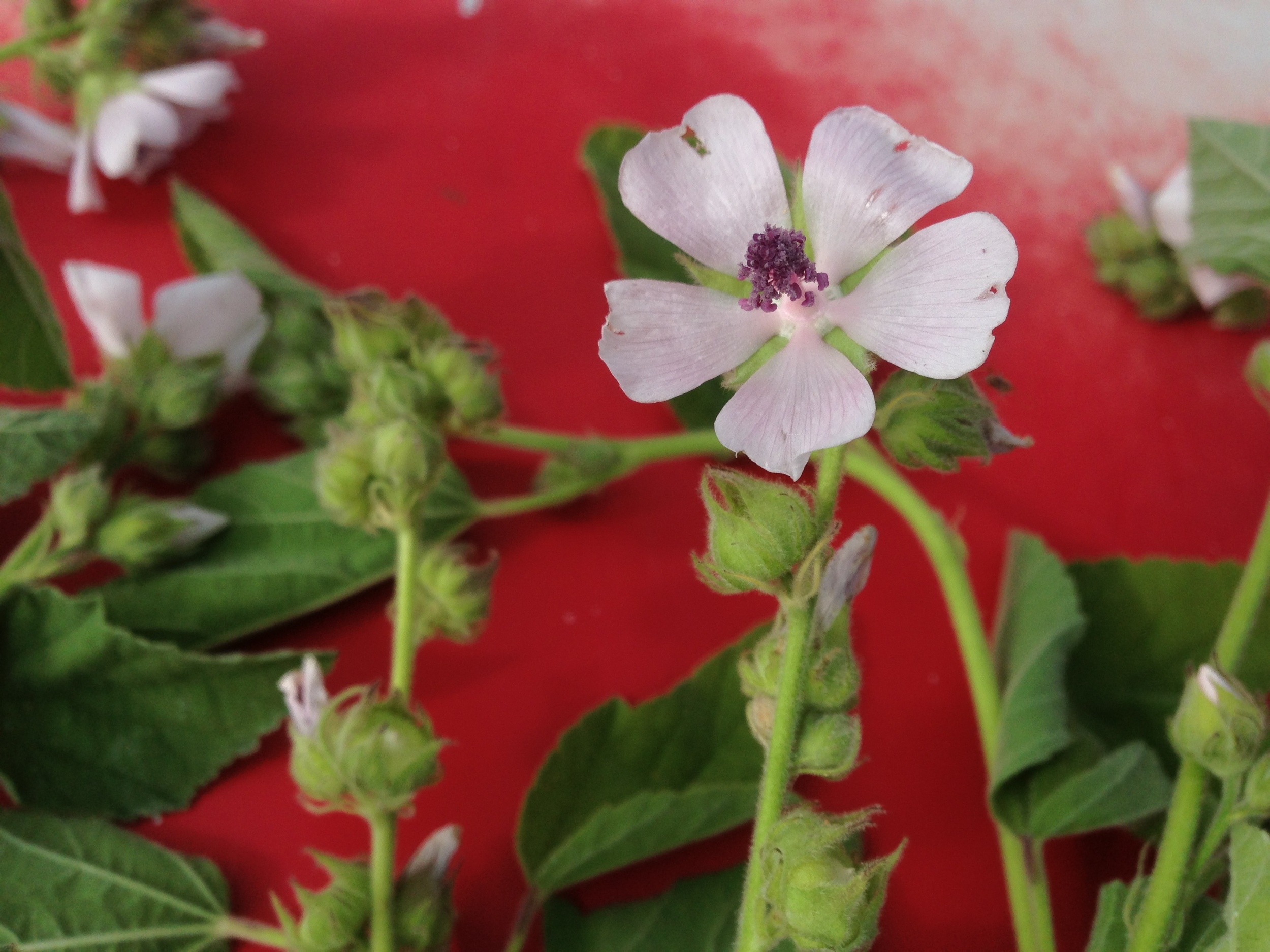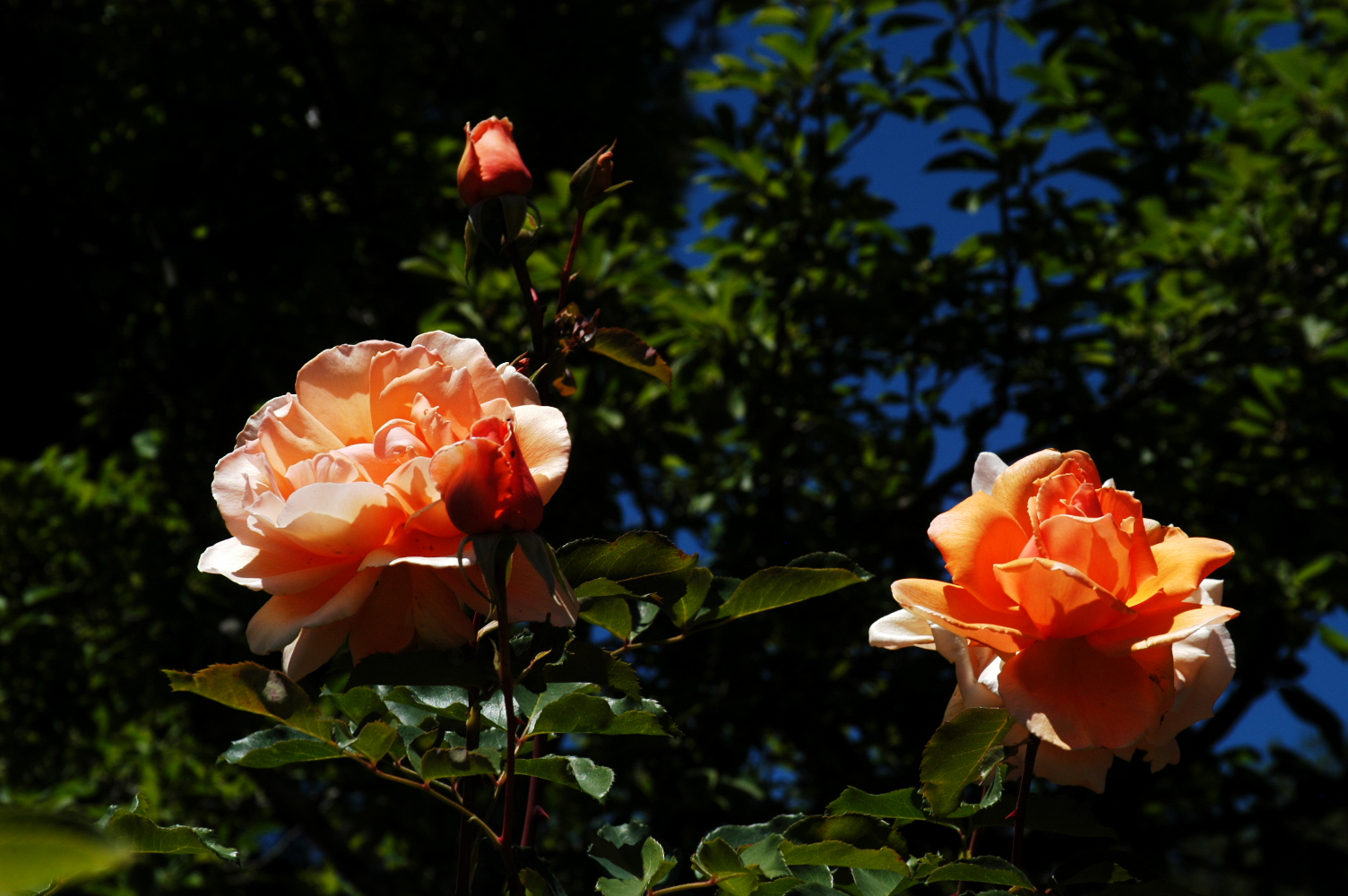A Celebration Complete with Celebratory Confections
This is Althea officinalis , or Marshmallow. The drawing is from http://hortuscamden.com/
Our summer celebration at Delphi Agrarian Arts Foundation, which brings together former interns, their families, and friends of the farm at the beginning of the height of our Season of Abundance (yes, capital letters here are appropriate), revolved, this year, around the peach harvest: plump, juicy and abundant as could be. In the background, however, through a recipe trial I've been very excited about, were, marshmallows. Quiet, sweet, subtle, and decorated with little borage flowers, this journal entry is dedicated to these once-medicinal confections, and will serve, also, I hope, as a call for other traditional marshmallow recipes from readers or browsers alike.
homemade marshmallows accented with edible borage flowers
Marshmallows come from an ancient Egyptian tradition: the extract of Althaea officinalis root was combined with honey, to make a sore throat treatment fit for the Gods but accessible to all, as the perennial shrub grows easily and prolifically in many soils and environmental conditions, granted it's not in full shade. What we understand marshmallows to be, typically - the white, fluffy cylinders - more likely resembles the old French pharmacist's version: egg whites whipped up with marshmallow root extract, and lightly sweetened so that children, and adults with a sweet tooth, could better tolerate the taste of the earthy root while still getting the medicinal benefits of the plant, too. The demand for these tasty confections soon exceeded the ability that the labor intensive process of making them allowed. When the process was industrialized the ingredients changed: from egg and marshmallow root to gelatin and, eventually, high fructose corn syrup, or corn syrup, and without the root of the marshmallow plant entirely.
Marshmallow root is used to sooth and heal sore throats as well as all mucus membranes: those in the digestive system, stomach ulcers, and the urinary tract. It helps to clear congestion and calm harsh coughs and, as an added benefit, it helps to control blood sugar thanks to it's large concentration of both soluble fiber (pectin), and the mucilage it contains. I steeped some cleaned and peeled root in near-boiling water for almost 15 minutes and found the tisane wonderfully calming, the pieces of root enjoyable to suck on and the beverage very nice to sip. One could add some chamomile flowers or another favorite herb to mask the taste but I enjoyed it solo, truth be told.
The recipe I used for the marshmallow confections was sourced from a whole-foods oriented blog and I chose it because it called for honey and marshmallow root, itself. However, the treat is not suitable for vegetarians, and I found the final product to be a bit too gelatinous for my taste, less light and fluffy, as I was hoping for. Nonetheless, they were a hit at our gathering, and a great step toward using our lovingly grown plants as both confection, and medicine!
José and family - enjoying the treats and the day.











